Croton: Bring The Tropics Of Asia To Your Living Room By Growing This Houseplant

HOUSEPLANTS > CROTON

Ed is a horticultural therapist, professional gardener and writer. Ed has a BSc in Occupational Therapy from Coventry University and a Diploma in Social and Therapeutic Horticulture (DipSTH) via Thive, the RHS and Pershore College. Ed runs a community kitchen garden in West Sussex, where he leads horticultural therapy sessions.
Reviewed By COLIN SKELLY

Colin is a Horticulturist and Horticultural Consultant with experience in a range of practical and managerial roles across heritage, commercial and public horticulture. He holds the Royal Horticultural Society’s Master of Horticulture award and has a particular interest in horticultural ecology and naturalistic planting for habitat and climate resilience.
CROTON GUIDES
Codiaeum variegatum, or the croton plant as it is more widely known, is a spectacular houseplant that is guaranteed to be the focus of any room.
Crotons are renowned for being a bit of a fussy plant to look after, but given some care and the right requirements, they can flourish and brighten up any indoor space.
Overview
| Botanical Name | Codiaeum variegatum |
| Common Name(s) | Croton / Joseph’s Coat |
| Plant Type | Ornamental Houseplant |
| Native Area | Asia |
| Hardiness Rating | H1B |
| Foliage | Evergreen |
| Flowers | Produces white flowers (very rarely) |
| When To Plant | Year-round |
| When To Prune | Year-round |
Sunlight
Preferred
Partial Shade
Exposure
Sheltered
Size
Height
1 – 1.5M
Spread
0.5 – 1M
Bloom Time
Summer
Soil
Preferred
Loam
Moisture
Moist but well-drained
pH
Any
Originating from the tropics of Asia, crotons are a spectacular plant and their multicoloured leaves have earned their rather apt synonym, Joseph’s coat.1S. (n.d.-d). Croton, Codiaeum variegatum. Wisconsin Horticulture. Retrieved March 14, 2023, from https://hort.extension.wisc.edu/articles/croton-codiaeum-variegatum/
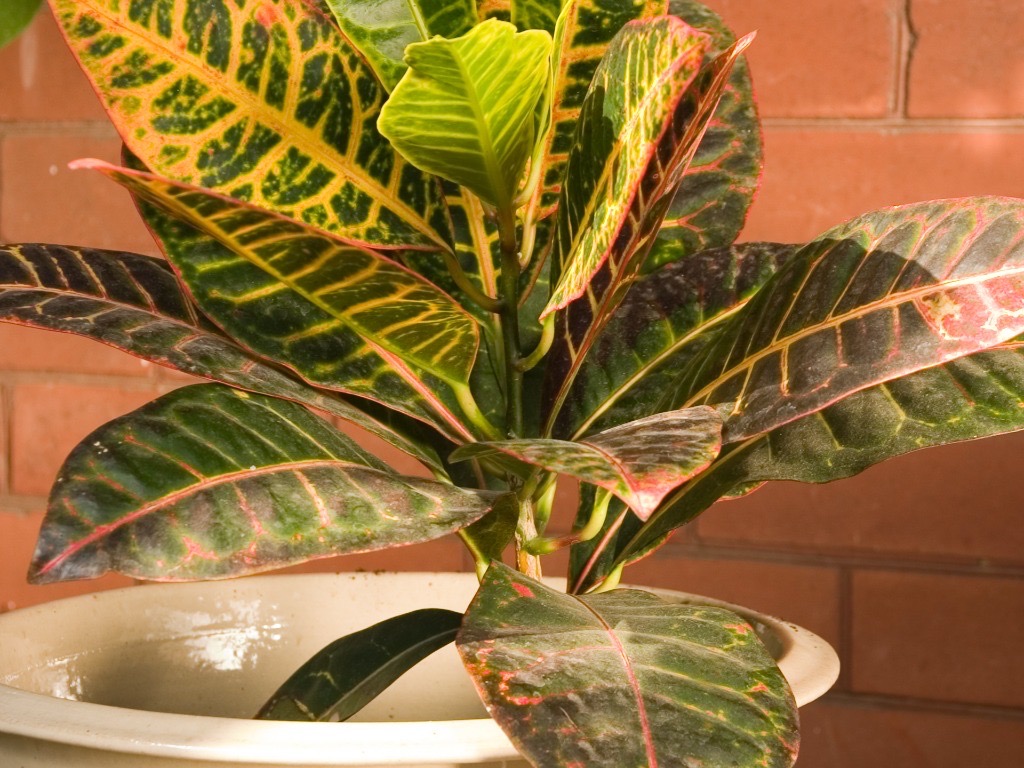
With their origins and exotic, vibrant foliage, it is no surprise that they require warm and humid conditions, but they can be successfully grown indoors here in the UK.
Common Varieties
There are many varieties to choose from, with leaves ranging in colour from red and pink to yellow and purple.
Most cultivated plants for sale do not grow as large as those found in the wild, but can still happily grow to an impressive 1.5m tall.
Croton plants can sometimes be found for sale in garden centres, but for some of the rarer varieties, searching online will provide more options.
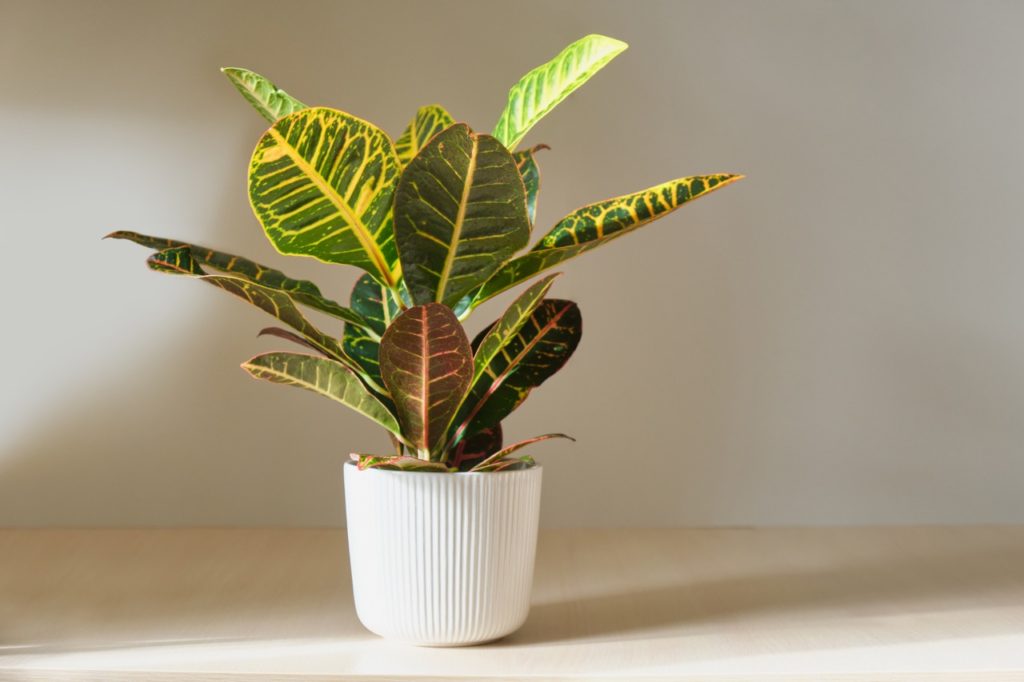
More commonly available as relatively inexpensive young plants, mature specimens can be found at rather eye-watering prices.
Here are some that are currently available here in the UK.
C. variegatum var. pictum ‘Mrs Iceton’
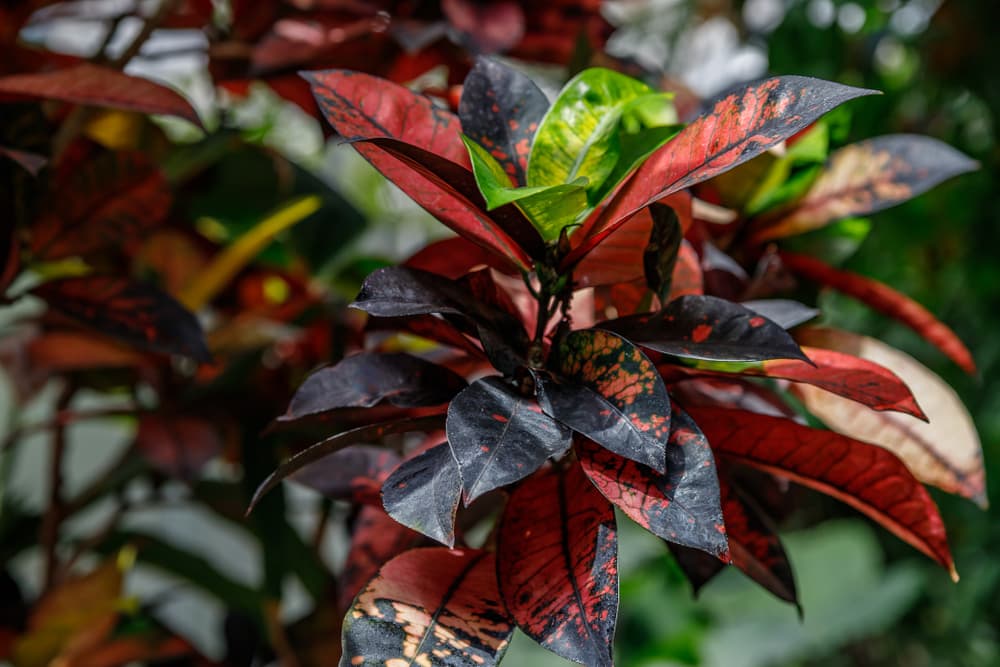
This variety is a stunner, producing beautiful leaves ranging in colour from red and brown to yellow and green.
Growing to an eventual height of 1m with half the spread, it certainly is a statement plant.
C. variegatum var. pictum ‘Petra’
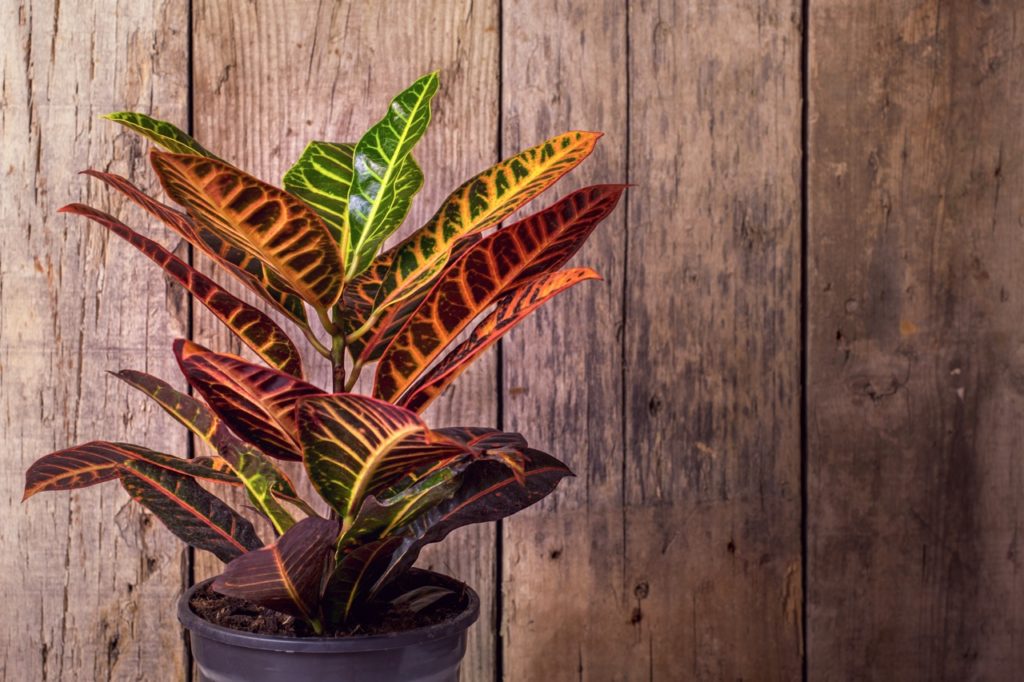
‘Petra’ can grow even larger than ‘Mrs Iceton’, reaching an impressive height of 1.2m with a 0.75m spread, meaning it certainly does need some space.
With its glossy green, yellow and orange leaves, it really is a magnificent plant.
C. variegatum var. pictum ‘Excellent’
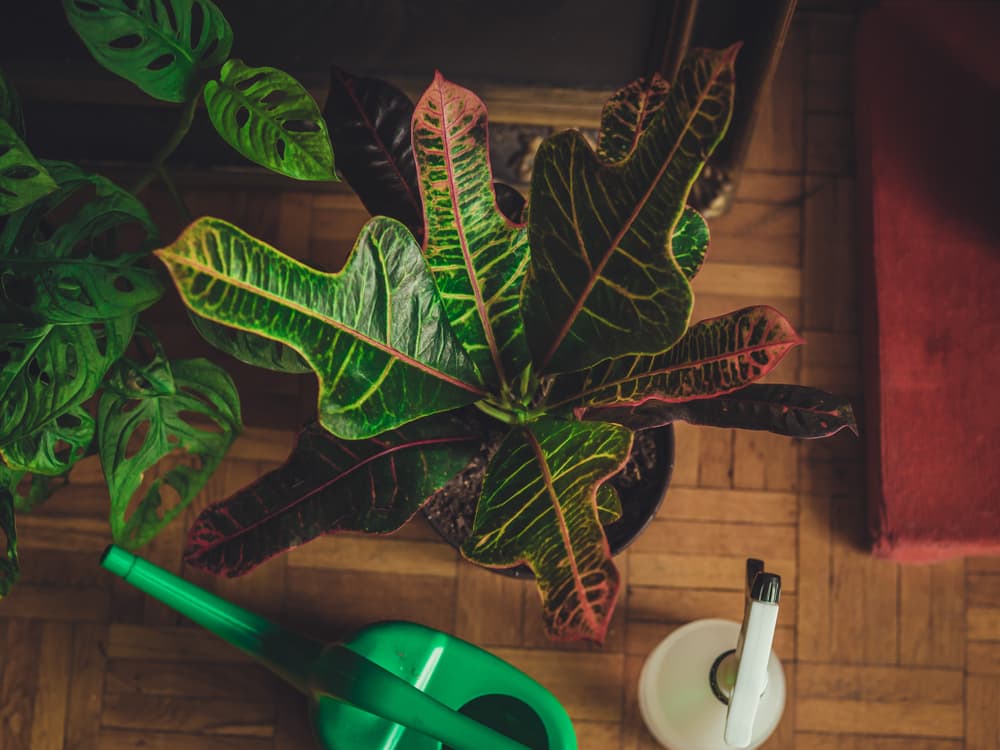
This cultivar is an unusual plant.
With its dark green leaves highlighted by its contrasting red, gold and yellow veins, it certainly stands out.
Grows to an eventual size of 1m tall with 0.5m spread.
C. variegatum ‘Mammy’
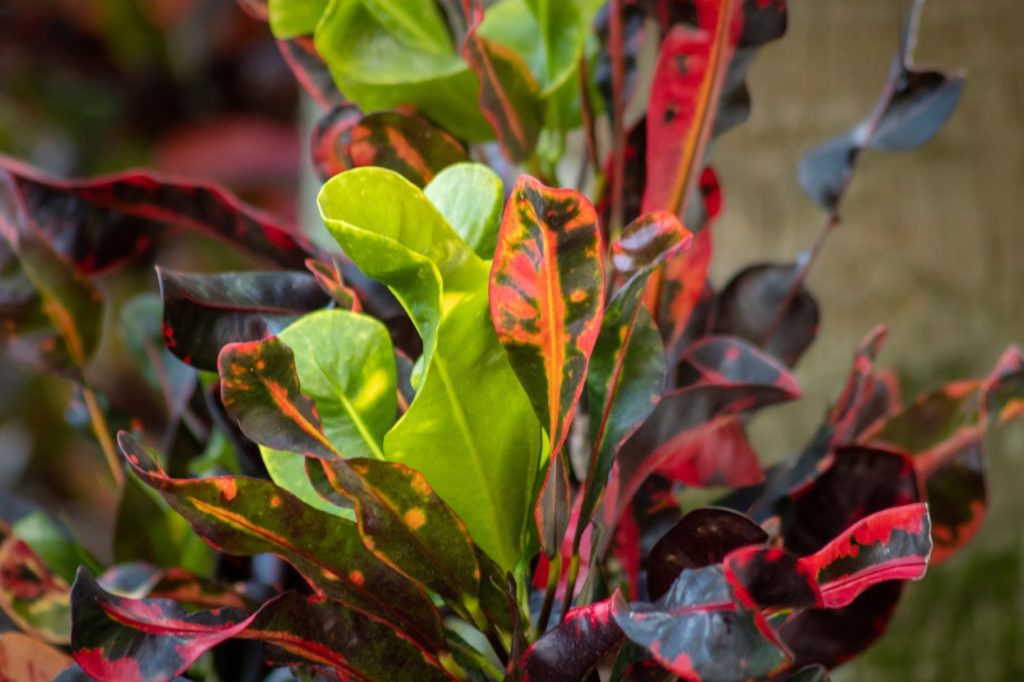
‘Mammy’ is one of the smaller varieties.
Growing to only 0.5m in height and spread, it is perfect for a smaller room.
The foliage of ‘Mammy’ can be slightly less vibrant than others but still packs a punch with its red, yellow and green leaves.
Where To Grow
Temperature & Humidity
Croton plants require a constant minimum temperature of 18°C, which is why they are grown almost exclusively here in the UK as houseplants.
When summer temperatures rise above this and once hardened off, they can be moved outside to a sheltered patio or terrace, but beware of a cold night which can seriously shock them.
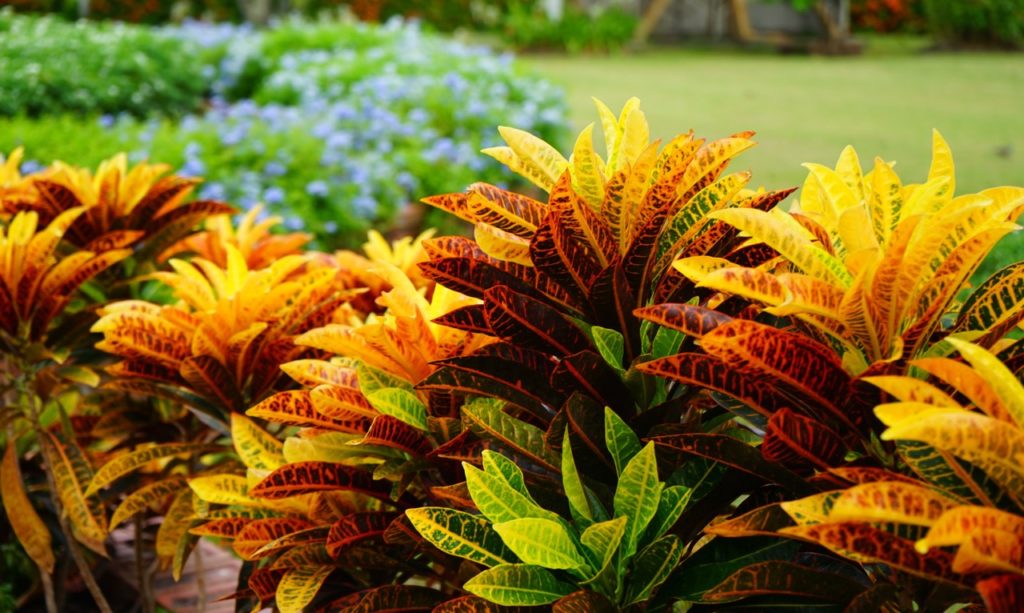
Coming from the tropics, high humidity is a must for crotons to flourish.
This can either be achieved by placing them in a warm kitchen or bathroom or by misting regularly depending on how dry the atmosphere is.
Sunlight & Exposure
Preferring a sunny spot, crotons will cope with a small amount of shade, but too much shade can lead to muted colours.

A bright spot receiving morning or late afternoon sunlight is perfect, as they don’t like the scorching midday sun of the summer months.
Crotons hate a draught, so be mindful of this when picking a spot for them and avoid any cold or uninsulated windowsills during the colder months.
Ongoing Plant Care
Croton plants are rather particular when it comes to their growing conditions and will tell you by dropping their leaves if they are unhappy.
Watering
Watering crotons can be a game of trial and error.
They need to have their soil damp at all times and they hate being allowed to completely dry out or sit in waterlogged soil.
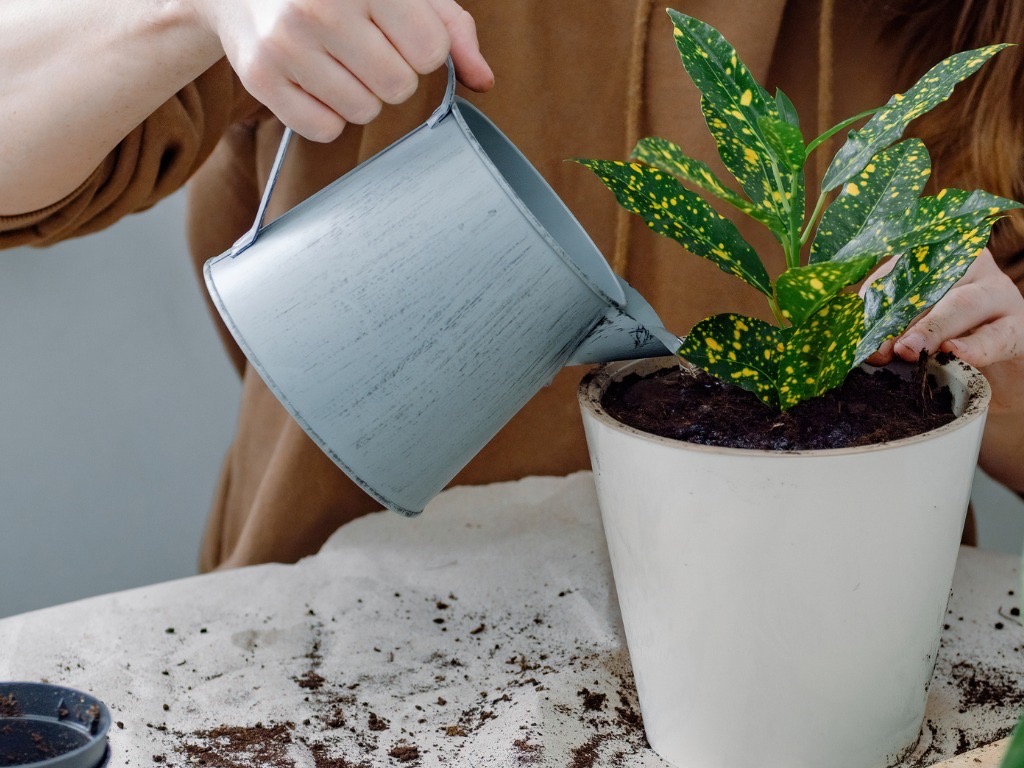
Placing some pebbles in between their plastic and decorative pot can lift them a few centimetres, thus reducing their chance of sitting in a pool of water.
Watering with cold water can send them into a bit of a shock, which is why watering with lukewarm water is recommended.
Feeding
Crotons are hungry plants and will significantly benefit from being given a balanced liquid feed every 2-4 weeks during the growing season.
Repotting
With an average rate of growth, crotons will need repotting from time to time as they outgrow their current pot or when their roots protrude out of the bottom.

Best done when actively growing in spring or summer, do not be tempted to use an overly large pot, but only one size up and use a specific houseplant potting mix.
Pruning
Pruning croton plants isn’t strictly necessary.
However, dead leaves can be removed and dead branches can be cut back to the base of the plant.
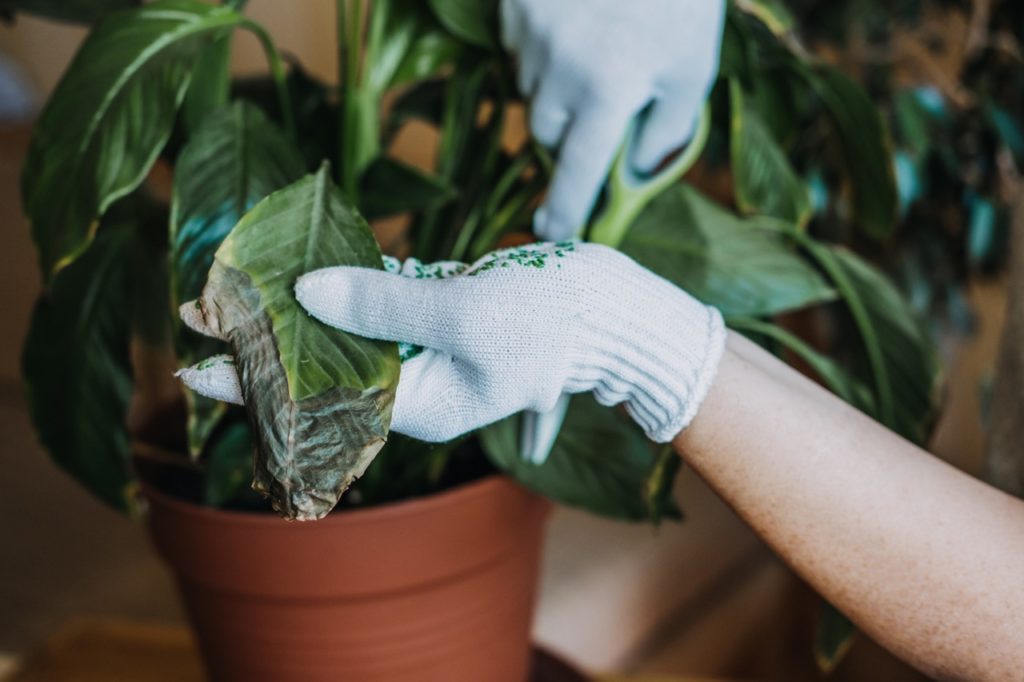
Pruning can also be performed to keep the plant to size and shape in spring or summer.
Using a pair of clean and sharp secateurs or snips, a cut can be made just above a leaf node, taking no more than one-third off each stem.
Deadheading
Crotons can be known to flower during the summer months, although this is rather unlikely here in the UK.
The small white flowers produced are rather insignificant in comparison to their wonderful foliage and are often removed so as not to detract from the leaves.
Either way, if you are lucky enough to have a croton flower, they can either be cut off from the base or allowed to flower and then removed.
Dusting
Somehow, croton foliage seems to attract even more dust than other houseplants.
Even a thin layer of dust can reduce the amount of light the plant receives and even reduce the plant’s ability to photosynthesise.
Removing the dust is best achieved using a damp cloth, but don’t be tempted to try using a shiny product as these can damage the precious leaves.
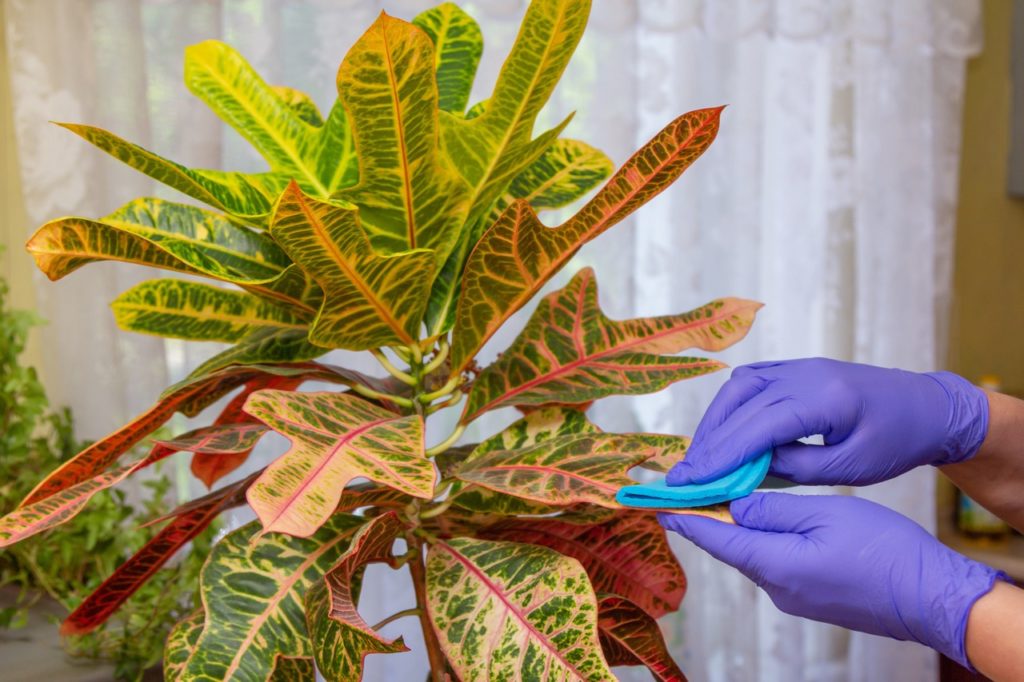
“Large, glossy leaved houseplants do tend to attract dust,” shares Colin Skelly, a Horticulturist with experience working as a Head Gardener.
“An easy way to wash this off is to stand the plant in a shower and wash it off with cold or tepid water.
“This will also water the plant and boost the humidity around the leaves for a time.”
Propagating
Propagating croton plants from a cutting is relatively simple, and who wouldn’t want to try and grow more of these spectacular plants for free?
During the growing season, using a clean and sharp pair of secateurs, take a cutting of new growth 10-12cm long, just above a leaf joint.
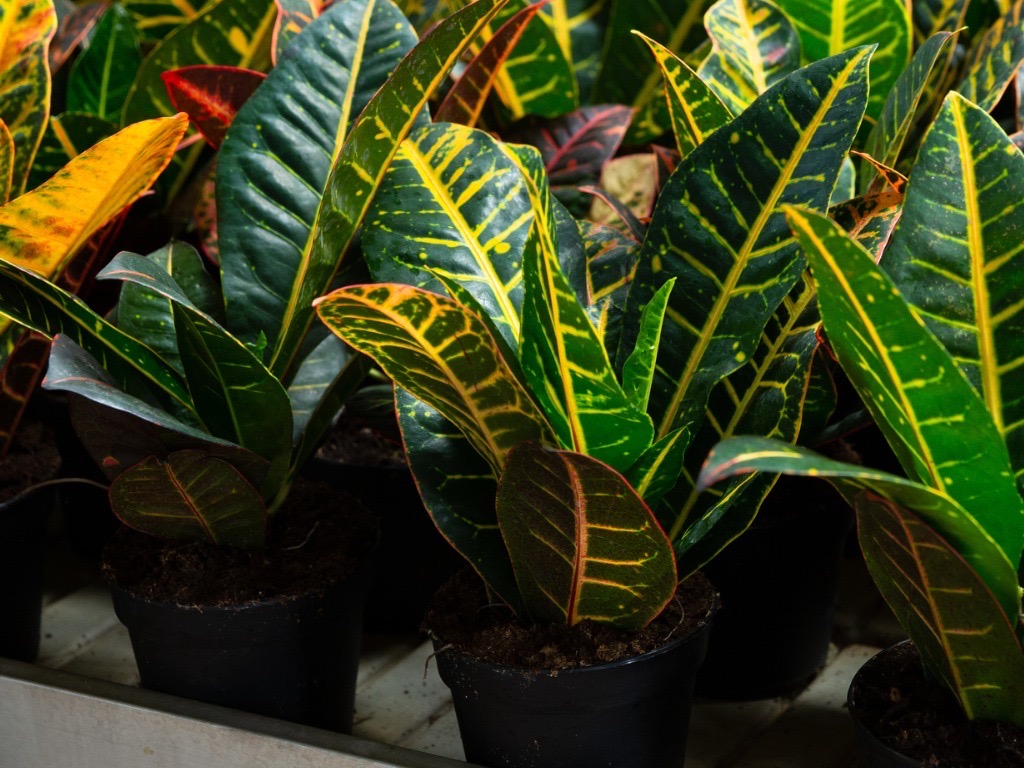
Remove all but the top 3-4 leaves, place in a pot full of a free-draining potting mix and water well.
To prevent the cutting from drying out, it is advisable to cover the pot and cutting with a clear plastic bag, but do not allow the bag to touch the leaves.
Keep the cutting warm and moist and out of direct sunlight and check for signs of root growth after 4-6 weeks, after which it can be potted on.
Common Problems
Croton plants tend not to be troubled by diseases, but they can be susceptible to some pests and other problems.
Leaf Drop
A croton plant dropping its leaves is its way of telling you that its environment isn’t quite right.
If yours begins to drop its leaves after being repotted or after being in transit, do not be too alarmed, as it may just be adjusting to its new environment having suffered a little stress during the packaging and delivery process.
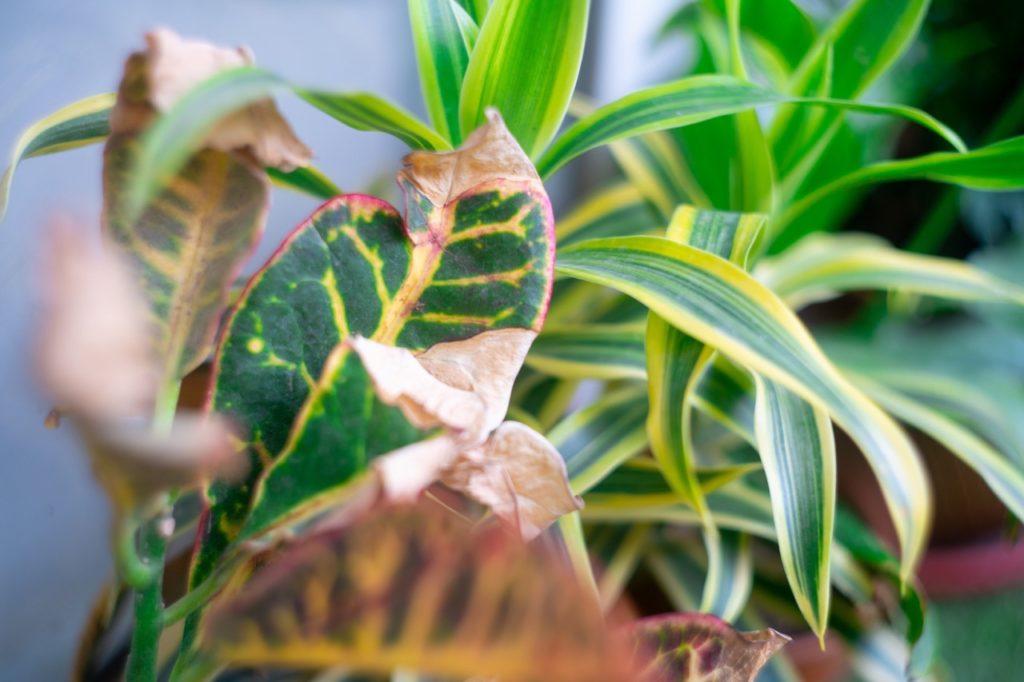
However, once happy in its new home, a croton plant may drop its leaves as a result of either the soil being allowed to completely dry out, from overwatering or from experiencing low temperatures or draughts.
Foliage Losing Colour
Sometimes croton leaves can lose some of their colour and intensity, leading to a rather dull-looking plant.
This can be caused by either low light levels in winter or when exposed to too much direct and strong sunlight.
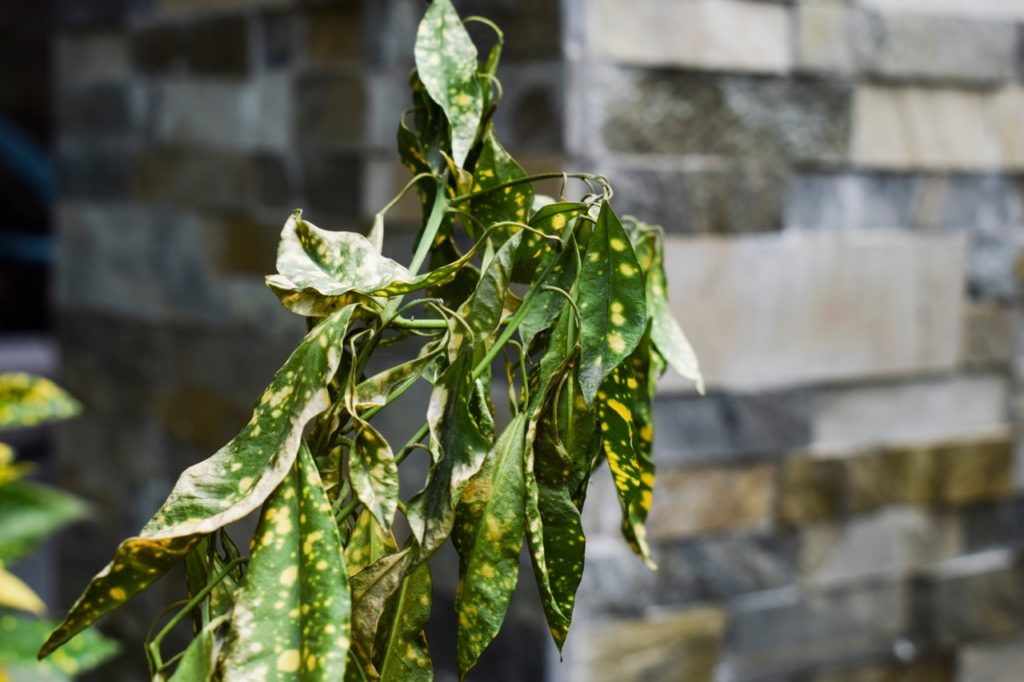
During winter it can be advisable to place the plant near a south-facing window so it can receive as much light as possible.
However, if this is not an option it may be worth looking into grow lights.
Glasshouse Spider Mites
Spider mites can be one of the most problematic pests to croton plants.
A tiny sap-sucking arachnid which thrives in warm and dry conditions, it’s almost no surprise that houseplants can be so susceptible.
Spider mites are difficult to spot due to their tiny size of less than 1mm and the fact that they tend to hide underneath the foliage.
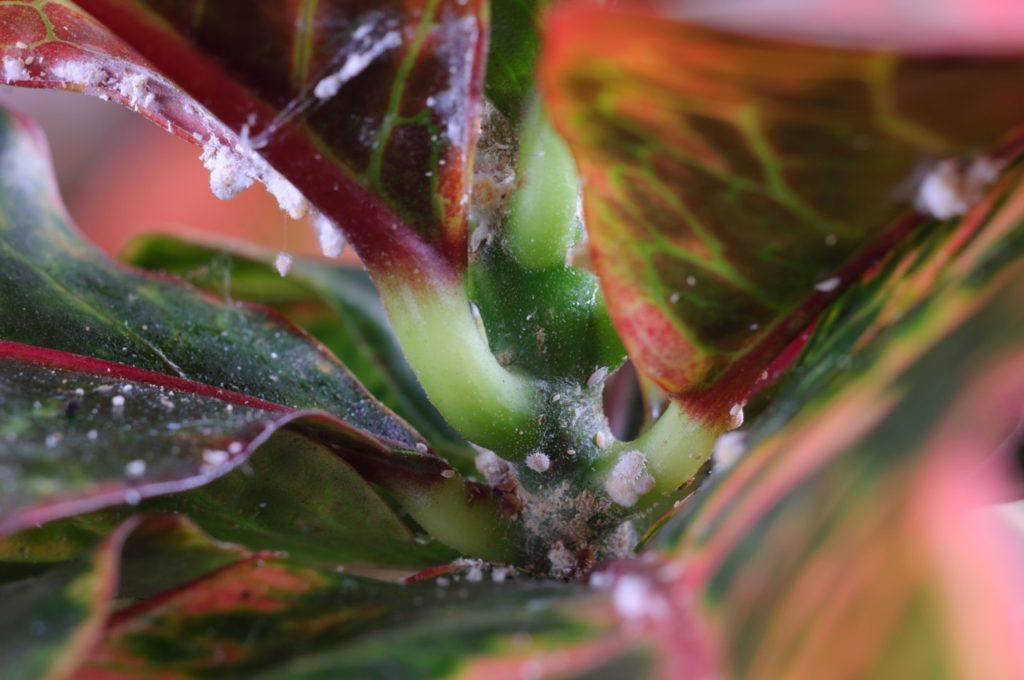
Often the first noticeable signs of them being present is the mottling of the leaves and webbing on the plant, which if not dealt with swiftly, can lead to leaf drop and the demise of the plant.
In the case of red spider mites, prevention is better than control.
This can be aided by checking the plants regularly for signs of them from spring onwards, increasing airflow and increasing humidity levels.
However, if red spider mites are confirmed, then biological and pesticidal controls are available.
References
- 1S. (n.d.-d). Croton, Codiaeum variegatum. Wisconsin Horticulture. Retrieved March 14, 2023, from https://hort.extension.wisc.edu/articles/croton-codiaeum-variegatum/
